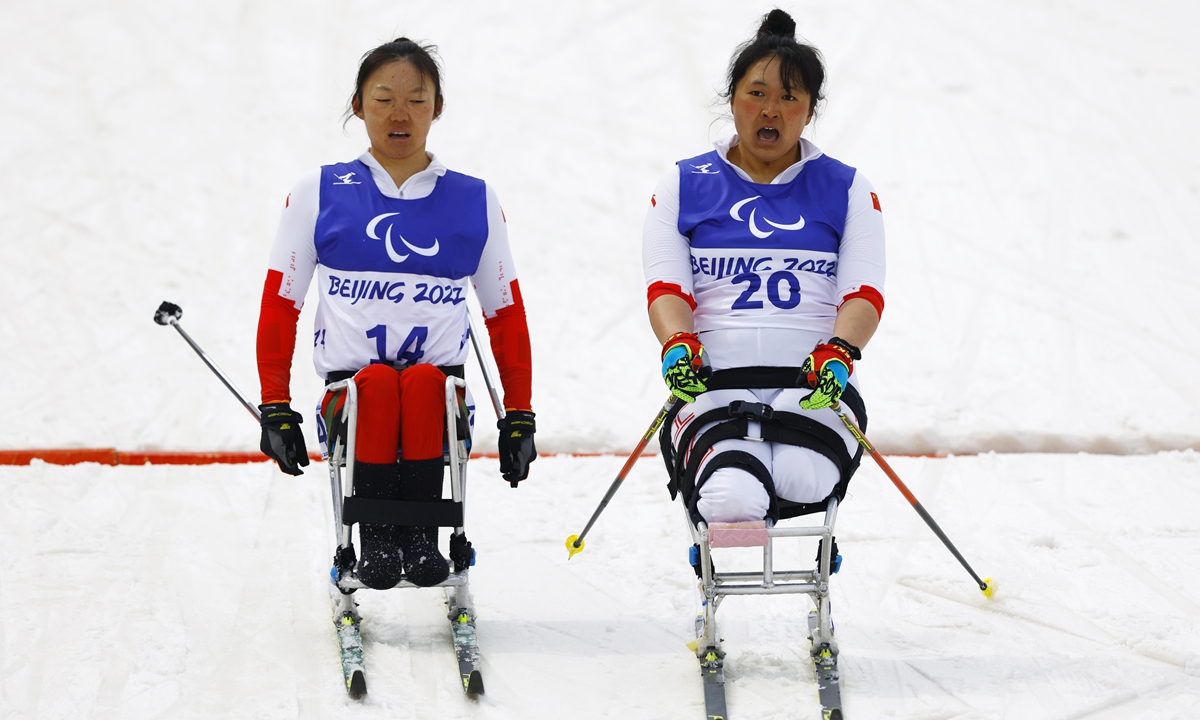
China's Li Panpan and Wang Shiyu compete in Women's Sprint Sitting Final of the Beijing 2022 Winter Paralympic Games in Beijing on March 9, 2022. Photo: IC
Paralympic cross-country skiing is one of the two Nordic skiing disciplines at the Winter Paralympic Games, and the other is biathlon. The sport first appeared at the Winter Paralympic Games in Ornskoldsvik, Sweden in 1976, and has been part of the program ever since.
The competition is open to athletes with physical impairment and blindness or vision impairment. Depending on functional impairment, a competitor may use a sit-ski, a chair equipped with a pair of skis. Sit-Skiers are those with leg impairments, but with varying degrees of torso control. They ride on sleds with skis designed for classic style tracks, propelling themselves with poles.
Male and female athletes compete in sprint, short distance, middle distance and long distance (ranging from 1 to 30 kilometers) or participate in a team relay using classical or free techniques. For sit-skiers, they compete in events of shorter lengths - sprint, middle (10 kilometers for men and 5 kilometers for women) and long (15 kilometers for men and 12 kilometers for women).
Besides the sit-skiers, athletes with vision impairment including blindness, low visual acuity and limited field of vision, and the standing skiers with arm impairments, leg impairments or with both arm and leg impairments can also compete in the event. For athletes with vision impairment, they need a sighted guide during the competition.




